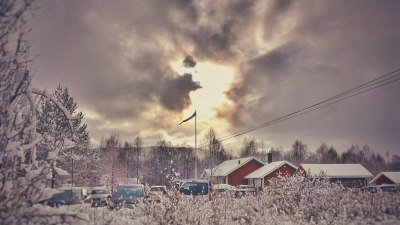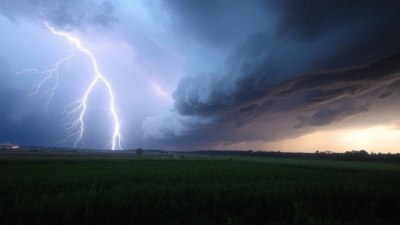The Science of Winter Storm Formation
Explore the fascinating science behind winter storm formation and their impacts on our environment.

Winter storms are meteorological phenomena that bring a variety of precipitation types, including snow, sleet, freezing rain, and ice. These storms can significantly impact travel, infrastructure, and daily life. Understanding the science behind winter storm formation is essential for meteorologists, researchers, and the public alike.
Understanding the Basics of Winter Storms
Winter storms develop under specific atmospheric conditions when cold air masses collide with warmer, moist air. The clash creates instability in the atmosphere, leading to the formation of clouds and precipitation. The primary ingredients for winter storm formation include moisture, temperature, and lift. The interaction of these elements determines the storm's characteristics and intensity.
The Role of Cold and Warm Air Masses
Cold air masses originate from polar regions, while warm air masses derive from tropical areas. The juxtaposition of these contrasting air masses generates fronts, which can lead to various types of winter storms. A cold front, for instance, happens when a cold air mass pushes under a warm air mass, forcing the warm air to rise rapidly. This upward motion can result in cloud development and precipitation.
Types of Winter Storms
Winter storms can be categorized based on the type of precipitation they produce. Snowstorms occur when temperatures are sufficiently low for snow to develop. Sleet storms happen when a layer of warm air is sandwiched between two colder air layers, causing frozen rain droplets to bounce when they hit the ground. Freezing rain occurs when rain falls through a layer of cold air near the surface, turning into ice upon contact with cold surfaces. Ice storms are particularly dangerous due to the weight of accumulated ice on trees and power lines.
The Process of Formation
The formation of winter storms typically begins with the convergence of moist air and cold air. This convergence occurs along a weather front or in a low-pressure system. The uplifting motion of the moist air cools it, leading to condensation. As water vapor condenses, it releases latent heat, which further warms the air and promotes continued rise. This cycle intensifies the storm. The stronger the upward motion, the greater the potential for heavy precipitation, which is characteristic of severe winter storms.
The Impact of Geography on Storms
Geography plays a significant role in winter storm forecasting. Mountain ranges can influence air flow, enhancing precipitation on the windward side while creating rain shadows on the leeward side. Coastal areas may experience different storm characteristics compared to inland regions due to the availability of moisture from the ocean. Understanding these geographic influences helps meteorologists predict storm paths and potential impacts.
Technological Advances in Storm Prediction
Advancements in meteorological technology have improved the ability to forecast winter storms. Doppler radar systems detect precipitation intensity, type, and movement while satellites provide imagery that helps track cloud systems and temperature changes. Numerical weather prediction models simulate atmospheric conditions, offering insights into potential storm development and severity. These tools are invaluable for issuing warnings and preparing communities for winter storms.
Winter Storm Monitoring and Warnings
National weather services and meteorological agencies monitor winter storms continuously. They issue various warnings based on storm severity, including winter weather advisories, winter storm warnings, and blizzard warnings. Public awareness and preparedness are critical during these events, as forecasts can change rapidly. Authorities rely on clear communication to ensure the safety of communities affected by winter storms.
The Hazardous Effects of Winter Storms
Winter storms can cause hazardous conditions, leading to road closures, power outages, and property damage. Snow accumulation can impair visibility, making travel dangerous. Ice formation on roads and power lines can lead to hazardous driving conditions and outages. Public awareness campaigns, including information on driving safety, emergency preparedness, and community resources, are vital to minimize the impact of winter storms on daily life.
Case Studies of Notable Winter Storms
Throughout history, several notable winter storms have highlighted the power of these meteorological events. The Blizzard of 1888, often referred to as the Great Blizzard, struck the East Coast of the United States, resulting in nearly 400 deaths and paralyzing travel for days. More recently, Winter Storm Juno in 2015 brought severe blizzard conditions to the Northeast, prompting widespread emergency declarations. Such events demonstrate the importance of understanding winter storm dynamics and preparedness for potential outcomes.
Climate Change and Winter Storms
Climate change is influencing winter storm patterns. Warmer temperatures can lead to more moisture in the atmosphere, potentially increasing precipitation during storms. Changes in climate can also affect the frequency and intensity of winter storms, impacting snowfall patterns and accumulation. Researchers are continuously studying these trends to better understand how climate change will reshape future winter weather.
Preparing for Winter Storms
Preparation is crucial for safety during winter storms. Individuals and families should develop winter weather plans, which may include emergency kits, communication strategies, and alternative travel routes. Staying informed through weather updates and alerts enhances readiness. Communities often hold drills and awareness campaigns to educate residents on how to react during severe winter weather. Being prepared not only ensures individual safety but also enhances community resilience against winter storms.
Conclusion
Understanding the science of winter storm formation is essential for anticipating their effects and preparing for their impact. The combination of cold and warm air masses, moisture, and atmospheric instability creates the conditions for winter storms. As climate change continues to influence weather patterns, further research will be essential to develop accurate prediction models and effective preparedness strategies. Ultimately, knowledge and preparation are key to minimizing the hazards associated with winter storms.











